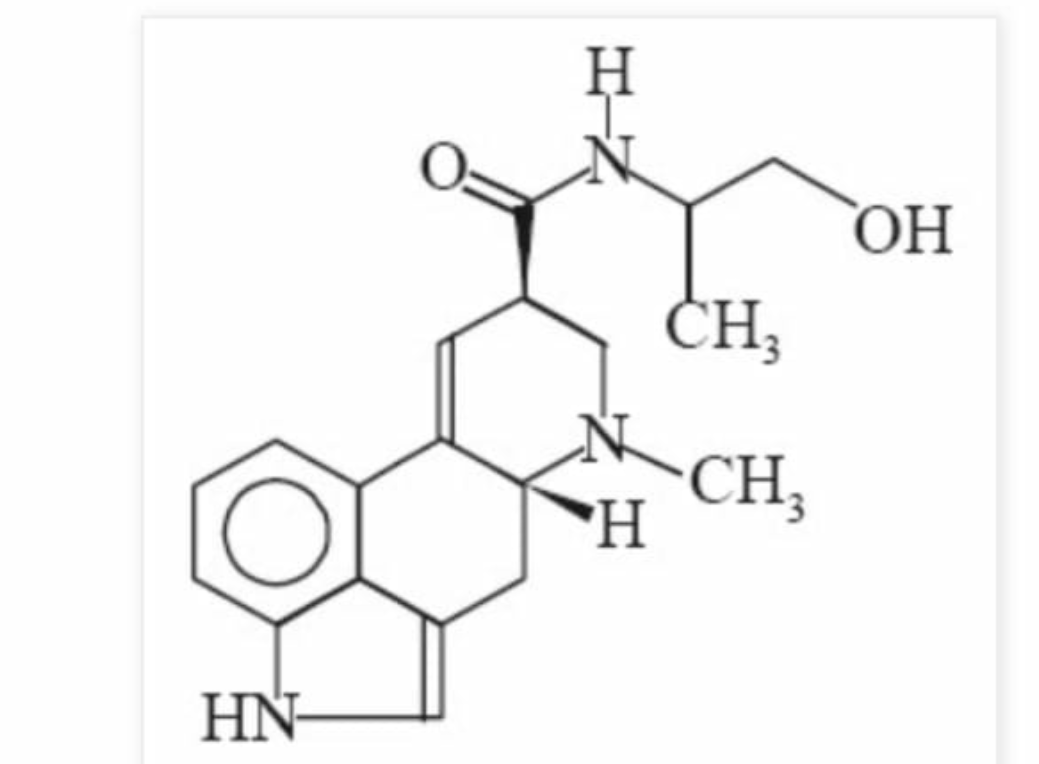Ergot: Morphological features,biological sources,chemical constituents,medicinal uses

ERGOT
1. Biological sources :
• It belongs to the clavicipitaceae family.
• Also known as rye ergot, secale cornutum.
• The biological source of ergot is dried sclerotinum of claviceps purpurea tulasne.
2. Morphological features :
• It is about 1-4 cm long and 2-7mm broad in size.
• It have fusiform, slightly curved and subcylindrical, tapering at both ends shape.
• The outer surface of ergot is dark or violet –black in colour.
• The outer surface longitudinal furrows and sometimes small transverse cracks.
• The fracture surface is thin and have dark outer layer and a whitish or pinkish –white central zone of pseudo parenchyma in which darker lines radiate from the centre.
• It have characteristics odour.
• The taste is unpleasant.
3. Chemical constituents :
• Ergot contain alkaloids as chemical constituent.
• Ergometrine and ergometrinine are both water soluble chemical constituents of ergot.
• Ergotamine,ergotaminine, ergosinine and ergosine are water insoluble chemical constituents of ergot.
• They also contain histamine,tyramine and other amines as chemical constituents.
• They are composed of sterols like ergosterol and fungisterol.
• They contain clavinet, mannitol ,lactic acid and succinic acid as chemical composition.
• They have clavicepsin, ergoflavin, ergotic acid and betain alkaloid.
• They have elymoclavine. Sclerythrin and ergonovine.
• Putriscine, cadaverine, agmatine and amino acid work as colouring matter.
• Physiologically active alkaloids obtained from lysergic acid.
• They have ergotoxine group such as ergocristine, ergocristinine, ergocryptine, ergocryptinine,ergocornine and ergocorninine as chemical constituents and they are water insoluble.
4. Uses :
• Ergot have oxytocic, vasoconstrictor and abortifacient activity ,due to this it is used to assist delivery and helps to reduce post-partum haemorrhage.
• It is used to treat migraine.
• By the partial synthesis of lysergic acid ,lysergic acid diethylamine is obtained which is a potent specific psychotomimetic.
• Ergometrine has oxytocic activity which stimulates the tone of uterine muscles and prevent post-partum haemorrhage, thus used in delivery.
5. Adulterants :
Ergot of wheat,ergot of barley, ergot of oats and ergot of diss.
6. Multiple choice questions :
1. The biological source of ergot is
(a) Leaves
(b) Fruits
(c) Roots
(d) Dried sclerotinum of claviceps
2. The colour of outer surface of ergot is
(a) Yellow
(b) Brown
(c) Reddish brown
(d) Dark or violet-black
3. Match the following with respect to medicinal uses of plants
I. Vinca A. To assist Delivery
II. Rauwolfia B. To treat lymphomas
III. Ergot C. To treat systolic hypertension
IV. Black pepper D. To treat dysentery
(a) I-C,II-B,III-A,IV-D
(b) I-B,II-C,III-A,IV-D
(c) I-A,II-D,III-B,IV-C
(d) I-D,II-A,III-C,IV-B
4. Which statement is incorrect with respect to chemical constituents of ergot?
I. Ergometrine and ergometrinine are both water soluble chemical constituents of ergot.
II. Ergotamine and ergosinine are both water insoluble chemical constituent of ergot.
III. They have phenol as chemical constituent.
IV. They contain sterols like ergosterol and fungisterol.
(a) Both I and IV
(b) Only IV
(c) Both II and IV
(d) Only III
5. The chemical constituents of ergot are
(a) Mannitol
(b) Ergosterol
(c) Ergotic
(d) All of the above
6. Which are the Chemical constituents of ergot work as colouring matter?
(a) Putriscine
(b) Cadaverine
(c) Agmatine
(d) All of the above
7. Ergot used to treat
(a) Migraine
(b) Psychotomimetic
(c) Cancer
(d) Both a and b
8. Adulterants of ergot are
(a) Terpenes
(b) Black pepper
(c) Ergot of wheat
(d) All of the above
9. Ergot belongs to which family?
(a) Clavicipitaceae
(b) Apiaceae
(c) Apocynaceae
(d) Boraginaceae
10. The main chemical constituent of ergot is
(a) Phenol
(b) Aldehyde
(c) Alkaloid
(d) All of the above
ANSWERS:
1. (d)
2. (d)
3. (b)
4. (d)
5. (d)
6. (d)
7. (d)
8. (c)
9. (a)
10. (c)
REFERENCE :
Evans W.C, Editors . Trease and Evans Pharmacognosy . New York , Saunders Elsevier; 2009, p. 196,252.